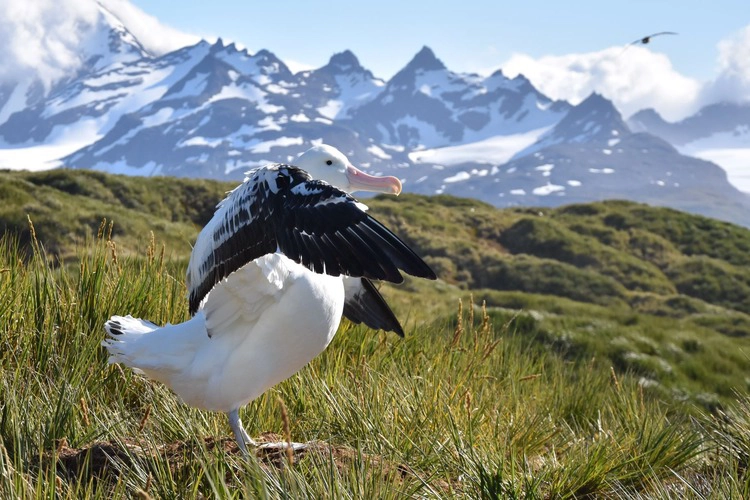
Common seabirds must now contend with melting sea ice as the planet warms – but how exactly does it affect them?
By
Seabirds – including most of the world’s albatrosses and petrels – that breed thousands of miles away from Antarctica may face repercussions in their food supply due to the continent’s rapidly melting sea ice.
The new research led by Durham University and the British Antarctic Survey (BAS) used satellite technology to monitor 2,497 foraging trips made between 1992 and 2023 from seven different species breeding on the sub-Antarctic island of South Georgia: the northern giant petrel, southern giant petrel, white-chinned petrel, light-mantled albatross, black-browed albatross, grey-headed albatross and the wandering albatross. Researchers found all seven species used sea ice-affected parts of the oceans.

Antarctica has not suffered big losses of sea ice as the Arctic has until the last five years, when it has seen its sea ice recede at an increasing rate. This poses an issue for the seabirds who flock there, forcing them to travel further from their breeding grounds to find food or alter the patterns of where food can be found.
In the study, albatrosses were found to largely avoid ice-covered areas, but in late summer and autumn, the species fed in areas where the ice had melted weeks or months earlier and released concentrated nutrients into the sea. In the spring, southern giant petrels flew hundreds of miles into the pack ice, which researchers theorise is to scavenge on the seals that breed on ice.
‘Given that all seven species of albatross and petrel we looked at travelled to the Antarctic seasonal sea ice zone, it is likely that they, and many other sub-Antarctic breeding seabirds, are linked to sea ice dynamics,’ said study co-author Professor Richard Phillips, leader of the Higher Predators and Conservation Group at the British Antarctic Survey.
‘Declines in Antarctic sea ice predicted under climate change could exacerbate the already unsustainable human impacts being experienced by these populations.’

On a bigger scale, researchers found a pattern of sea birds moving north and south with the seasons, which they think is caused by birds following plankton blooms in the oceans – known as green wave surfing.
As part of their analysis, researchers also identified several limitations to the most recent study, which are hoped to be explored in further detail in the future.
While sea birds used sea ice-affected habitats, the study does not look into exactly what the birds are eating. By carrying out follow-up tracking and dietary studies, it is hoped that a more detailed understanding can be gleaned of how changing sea ice might affect different species. Resolution of the sea ice and tracking data can also be improved to see how birds interact with sea ice at a fine scale, as well as tracking the beginning and end of breeding periods to monitor seabird activity in sea-ice-affected areas.





